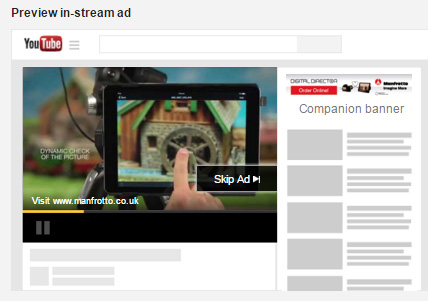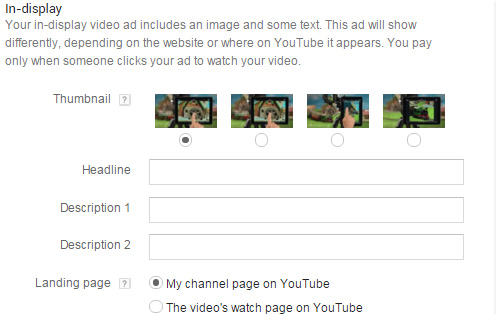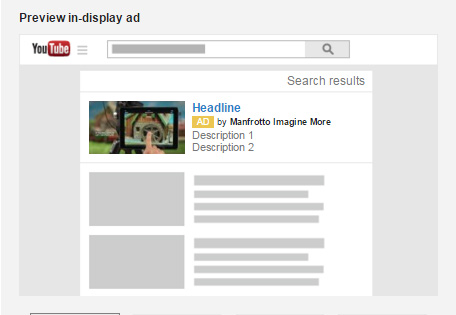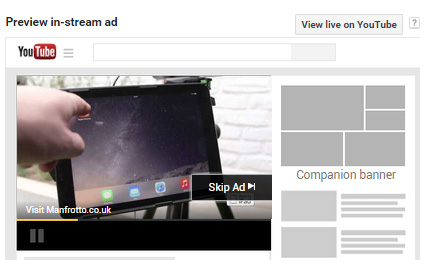Tina Judic explores ways marketers can leverage the power of video advertising in their campaigns.
With more than £1billion active YouTube users all being presented with a choice of around £5billion videos every day on the channel, it’s now possible to eat, sleep and breathe video!
Today, some 50% of all YouTube views occur on mobile devices and we watch on average 39 minutes of video on our phones every day. So, how can advertisers use video ads to deliver the right message to the right people during their right micro-moment on the web?
For a start, we should no longer think of video advertising as a channel solely for increasing engagements, i.e video views. It is so much more powerful than this. Instead, if you’re in a position to a) create demand for your brand, b) reach the right audience and c) combine this with some form of purchase intent, then video is a channel which could add value to many other areas of your business.
Creating demand
Engaging brand content is a perfect way to garner demand, but it’s imperative you also consider how to make your brand stand out in the crowd competing in your video space. Most YouTubers actively devour videos, and often have an intention to buy too, but they may not know your brand or even have a clue as to what types of products or services that provide. Using video will assist you in adding valuable traffic across a number of your other channels.
Importantly too, Google recently said that 35% of users are more likely to search for your brand after seeing a video ad. So if you’re not already visible in the video space, then you could be missing out!
Reach the right people (with the right video advertising format)
So, if video looks to be a good way for you to create demand for your brand, how can you ensure you are actually talking to the right people? Obviously, there may be some target audiences who don’t watch videos and then it’s obvious that a video campaign won’t be suitable for your needs.
However, with video predicted to account for 69% of all online data traffic in 2017, it would be hard to believe that a video campaign wouldn’t be a worthwhile addition to help leverage your other online activity.
Google’s video streaming app TrueView offers two types of video ads; in-stream and in-display. The type of ad format you want to use will largely depend on your marketing objectives; whether you want to increase brand awareness or whether you’re more interested in delivering incremental sales?
If you’ve watched a YouTube video then it’s highly likely that you’ve seen the ‘Skip Ad’ button (example pictured below). This is in-stream advertising. It means the user has no choice and has to watch the first five seconds of the ad before they can opt to skip the rest of the ad. For marketers, the key point here is them make sure they want to watch more! Those first five seconds need to grab their attention immediately. Remember, your video campaign is only as good as the video itself.
To strengthen your online branding further, you can also consider adding a companion banner alongside in-stream ads. This appears on the right-hand side of your video and will serve to increase engagement rates with your users as it’s proven that they’re more likely to click or view your video if you have dominated the results page.
TrueView’s other option, in-display, is when your video ad appears next to other YouTube videos. Viewers need to actively click on your video to view it, so content is crucial here.


As well as figuring out which format is the best for your campaign, take time to think about your audience too. For existing visitors, it’s all about reinforcing your brand message and increasing their ongoing relationship you. Consider offers or promotions. For new visitors though, content is key.
Purchase intent
The goal here is to create demand for your video and then convert users via your other marketing channels.
Recent statistics from Google showed that 42% of online shoppers use video during their pre-purchase research and 64% of people use YouTube to find products. So what better way to tempt users to buy from your site than to use your Google Shopping Feed? With the release of Shopping Ads on YouTube recently, advertisers can now expand their shopping ads beyond their search space. They can now show in contextually relevant videos to give the user intent to buy. What’s more, they can continue to manage their feed using the Google Merchant Center, so there’s no need to set up a separate feed.
Measure your success
More than half of small and medium-sized businesses have ceased advertising on YouTube because they expected clicks or conversions and didn’t get them. However, it’s more important to highlight the value video advertising can bring outside of direct clicks and conversions and to consider how it can used for cross-channel uplift, how it can assist conversions and even build brand reputation.
Multi-channel reports available through Google Analytics are therefore invaluable for helping marketers to understand where video campaigns have assisted in a final sale. They will also help brands to see any uplift in branded traffic as a result of the campaign for other channels.
Engagement rates
Monitoring movement in your engagement rates is also a crucial exercise. Properly get to grips with your metrics. Did you see the click-through rate you wanted? If not, at what point were people closing the video? Were the call-to-actions strong enough? Were people using the video in the right way? And equally as important, did the campaign assist conversions across other channels, for example, did paid search activity later convert the user?
If your campaign contributed to any of the above, then you’re onto a winner. If it didn’t, then it’s time to consider some key points: have you let your campaign run long enough to fully understand its value? Can you consider altering your strategy for improved performance? And, of course, are you really embracing mobile? With such high numbers of users viewing videos and seeing ads on mobile devices, understand the value of this device and don’t underestimate the contribution or role it plays in your consumers’ lives.












Leave your thoughts